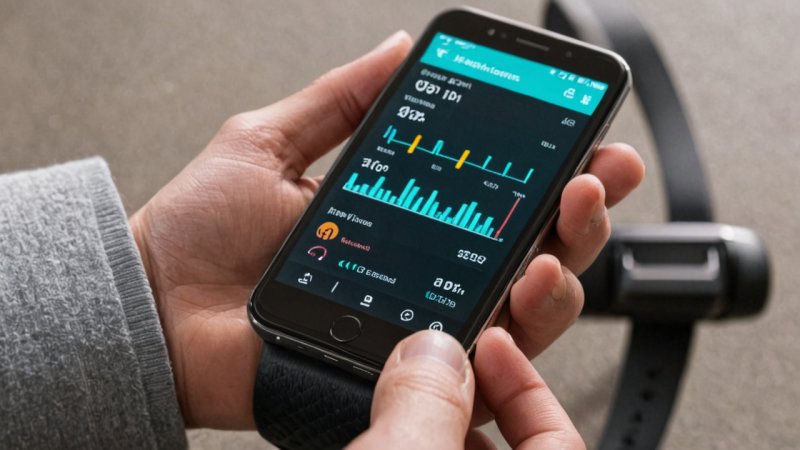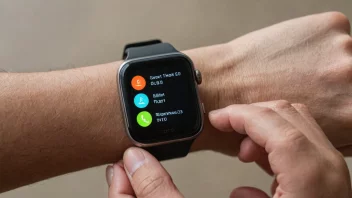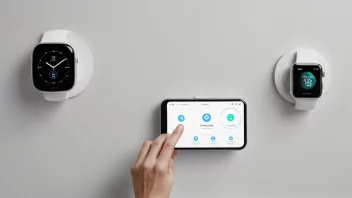In the age of technology, fitness enthusiasts have access to a plethora of tools designed to enhance their workout experience. Among these tools, smart wearables and fitness apps stand out as two of the most popular options. Each offers unique features and benefits that can help individuals achieve their fitness goals, but which one is the best choice for you? In this article, we will compare smart wearables and fitness apps, examining their pros, cons, and the differences that may influence your decision.
1. Overview of Smart Wearables
Smart wearables, such as fitness trackers and smartwatches, are devices worn on the body that monitor various health metrics. They typically track data such as heart rate, steps taken, calories burned, and sometimes even sleep patterns. Popular examples include the Apple Watch, Fitbit, and Garmin devices.
Pros of Smart Wearables
- Real-Time Data: Smart wearables provide immediate feedback on your performance, allowing you to make adjustments during your workout.
- Variety of Metrics: Many wearables track multiple health metrics beyond just steps, including heart rate variability, blood oxygen levels, and more.
- Long-Term Tracking: Wearables can store data over time, helping you to visualize your progress and set long-term goals.
- Integration: They often sync with other health apps and devices, providing a comprehensive view of your health.
Cons of Smart Wearables
- Cost: High-quality smart wearables can be expensive, often requiring a significant initial investment.
- Battery Life: Depending on the model, you may need to charge your device frequently, which can be inconvenient.
- Limited Apps: While some wearables support third-party apps, they may not have the same extensive app library as smartphones.
2. Overview of Fitness Apps
Fitness apps are software applications that can be downloaded onto smartphones or tablets. They often provide workout routines, track workouts, and offer nutritional advice. Popular fitness apps include MyFitnessPal, Strava, and Nike Training Club.
Pros of Fitness Apps
- Accessibility: Most fitness apps are free or low-cost, making them accessible to a wider audience.
- Variety of Features: Fitness apps often offer diverse features such as workout videos, community support, and nutrition tracking.
- Customization: Many apps allow users to customize their workout plans based on personal preferences and goals.
- Regular Updates: Apps frequently update their content, providing users with new workouts and features.
Cons of Fitness Apps
- Reliance on Hardware: Fitness apps require a smartphone or tablet, which can be cumbersome to carry during workouts.
- Lack of Real-Time Monitoring: While some apps track metrics, they may not provide real-time feedback as effectively as wearables.
- Data Entry: Users often need to manually enter data, which can be a hassle and lead to inaccuracies.
3. Key Differences Between Smart Wearables and Fitness Apps
While both smart wearables and fitness apps aim to enhance your fitness journey, their approaches and functionalities differ significantly.
Functionality
Smart wearables are designed primarily for tracking and monitoring fitness metrics in real time, whereas fitness apps offer a broader range of features, including workout planning and nutrition tracking.
Data Collection
Wearables collect data automatically through sensors, providing a seamless user experience. In contrast, fitness apps often require manual input, which can be less convenient.
Cost
Smart wearables typically involve a higher upfront cost compared to most fitness apps, making them a more significant investment.
4. Which One Should You Choose?
Choosing between smart wearables and fitness apps ultimately depends on your personal preferences, lifestyle, and fitness goals. If you prioritize real-time feedback and comprehensive health tracking, a smart wearable may be the better option. On the other hand, if you seek a cost-effective solution with a variety of fitness resources, a fitness app might be the way to go.
Conclusion
Both smart wearables and fitness apps offer valuable tools for enhancing your fitness journey. Smart wearables provide immediate data and detailed tracking, while fitness apps offer versatility and accessibility. When making your choice, consider what aligns best with your workout style and needs. In many cases, a combination of both may yield the best results, allowing you to harness the strengths of each technology to achieve your fitness goals.






